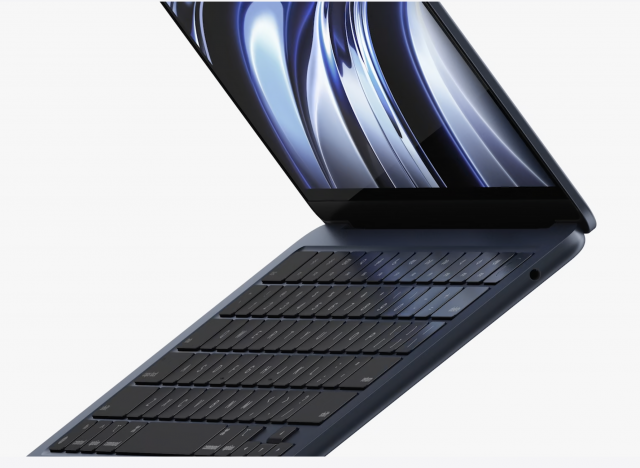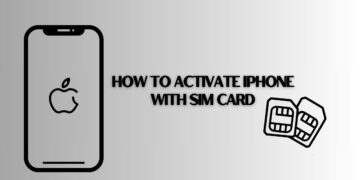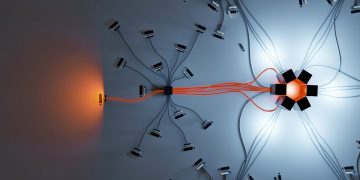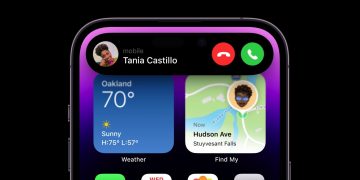This site may earn affiliate commissions from the links on this page. Terms of use.
There’s an old adage in tech about never buying the first generation of any product. As far as Apple Silicon is concerned, however, you might be better off if you did. Reviewers keep finding new ways that the new, M2-equipped MacBook Pro base system is a weaker product than its predecessor. Now, there’s evidence from real-world tests that the M2-equipped base model MacBook takes a hefty penalty when put under a heavy DRAM load. For now, only the baseline M2 with 256GB of SSD storage and 8GB of unified memory is known to be affected.
In the past few days, we’ve seen evidence that the entry-level MacBook Pro offers just half the SSD controller channels of the M1 and that this impacts its theoretical storage performance. We also know that the 13″ base system gets as hot as 108C in tests. Thanks to a new video by the same channel, we’ve now got evidence that the baseline M2-equipped system loses a significant amount of performance and system responsiveness when under load when compared to the 16GB M2.
Vadim Yuryev of YouTube tech channel Max Tech has been putting the M2 through its paces, including some tests between an 8GB M2 with both 256GB and 512GB of storage. This test isolates the impact of the SSD and reveals a problem with the design. At least some of the 8GB M1’s performance came courtesy of its SSD controller configuration — and with just one IC, the platform can’t maintain the same speeds.

Data and graph by Max Tech
A 12.5-percent performance hit doesn’t seem so bad, though we normally wouldn’t expect the shift from one NVMe SSD to another to cause this kind of disparity. But look what happens when Yuryev loads the system with a Chrome browsing session at the same time. Both of the systems above and below are 8GB systems:

Data and graph by Max Tech
This trend was not unique to Chrome; Safari looks the same. A 4K video export in a different application had the same problem. Performance tanks when a workload is put on the system, and responsiveness suffers. These problems continue throughout a number of benchmarks. Once the RAM on the M2 is full, the system often takes a heavy performance hit. The M1 system does not.

Data and graph by Max Tech
In these tests, the 512GB M2 model isn’t 15 percent faster, it’s 55 percent faster. And according to Max Tech’s video, system responsiveness on the M2 system with 8GB of RAM goes in the tank once these exports kick into gear. The 16GB variant tested didn’t have these problems.
A comparison against the M1 in 8GB and 16GB flavors shows that it also lost performance when equipped with just 8GB of RAM, but the performance hit was much smaller. The M1 with 8GB was 1.23x slower than the M1 16GB in certain tests. The M2 8GB is up to 1.79x slower.
Why is This Happening?
The problem here is that the M2 is being forced to stream data off the SSD once it runs out of main memory. The baseline M1 has two physical connections to the ICs that make up its SSD. The M2 has one. This means that when the system attempts to lean on the SSD in place of additional memory, the M2’s SSD can’t keep the CPU fed. I’m genuinely surprised at how slow the M2 is at web browsing while rendering output (it is unclear if the 8GB M1 is affected similarly, the video compares the 8GB and 16GB M2 flavors).
Tellingly, there is sometimes a performance difference between the 8GB M2 and the 16GB M2, even when DRAM capacity isn’t being pushed. The M2’s lower SSD controller bandwidth can hit non-compute benchmarks, and real-world workloads, depending on how you load the system.
Does this matter? I’d argue that it does, for several reasons:
First, this is a clear performance regression over the first-generation product and that’s never good. Second, it introduces uncertainty and doubt in the product line. In some cases, an 8GB M2 is 1.15x – 1.8x slower than a 16GB M2. Third, Apple is doing a poor job of communicating exactly how much DRAM and SSD storage its customers need to pay for in order to enjoy an M2 that isn’t functionally crippled.
There’s no such thing as memory upgrades if you buy an M1 or an M2. There’s no way to buy a system now and double its RAM in a few years, when DDR5 prices come down. The RAM total you pick today will need to last the system the rest of its life, which is why it’s a little concerning that Apple didn’t disclose how big a performance hit the M2 would take on account of its gimpy storage. Apple, if anything, needs to do a better job than an equivalent PC manufacturer in communicating how important RAM loadout is to the long-term life of a system.
Fourth, there’s evidence that the 8GB M2 user experience goes straight to hell if you tap its RAM out, while the M1 doesn’t appear to, based on the relative performance each loses. Watching MaxTech try to surf the web on the 8GB M2 while running the workloads gave me flashbacks to running antivirus scans and web surfing during the Bad Old single-core days.
I suspect Apple would argue that the various workloads Yuryev tested aren’t representative of the workloads they expect customers to run. That’s fair, to a point — but only to a point. The first-generation of Apple Silicon has no problems in the same workloads, with the same RAM. Furthermore, Apple did not reach out to reviewers and advise them to stick to easier tests when the M1 reviews went out back in 2020.
An awful lot of audio/video benchmarks got published showing that an M1-equipped laptop was capable of beating Apple’s Intel-based desktops, and I know a few people personally who took advantage of the Apple Silicon launch to swap CPU manufacturers. The baseline M2 is a clear step backwards from the M1 in that regard. This is especially true if you are stretching to afford a new MacBook. 8GB of RAM isn’t that much these days no matter what, but if you have to buy a system with just 8GB, buy the M1-based system that takes a 25 percent performance hit (compared to the M2) and remains responsive when it runs out of memory, not the M2 entry-level MacBook Pro that takes a 1.8x shi hit and offers the responsiveness of a late-1990s Celeron when it runs out of RAM.
Don’t Buy an Entry-Level M2
At this point, there is no reason to consider a 13-inch M2 MacBook Pro if you have the option to buy a different MacBook. An 8GB M1 system mostly matches an 8GB M2 system in other compute benchmarks and runs cooler, is likely cheaper, and may remain more responsive under heavy load. While these problems do not appear to afflict more expensive models, which offer more RAM, fans, and SSD storage, the M2-powered MacBook Pro starts at $1299. That’s well into boutique territory for PC laptops, and it ought to buy you a system that can perform one high performance task while simultaneously surfing the internet.
Complicating matters is the fact that these M2 base models are the only ones available from Apple itself with no wait. If you want one of the non-crippled machines, you’re looking at a several-week delay and a lot more money.
I have been enthusiastic about Apple Silicon from the beginning, but a good chip needs a good laptop, and the baseline 13-inch MacBook Pro is clearly compromised. Caveat emptor.
Now Read:
Source by www.extremetech.com






























